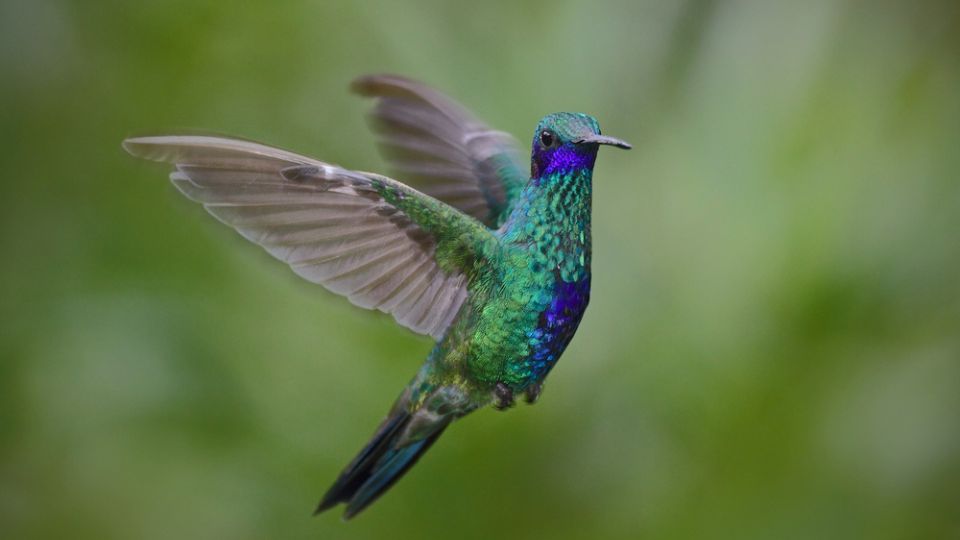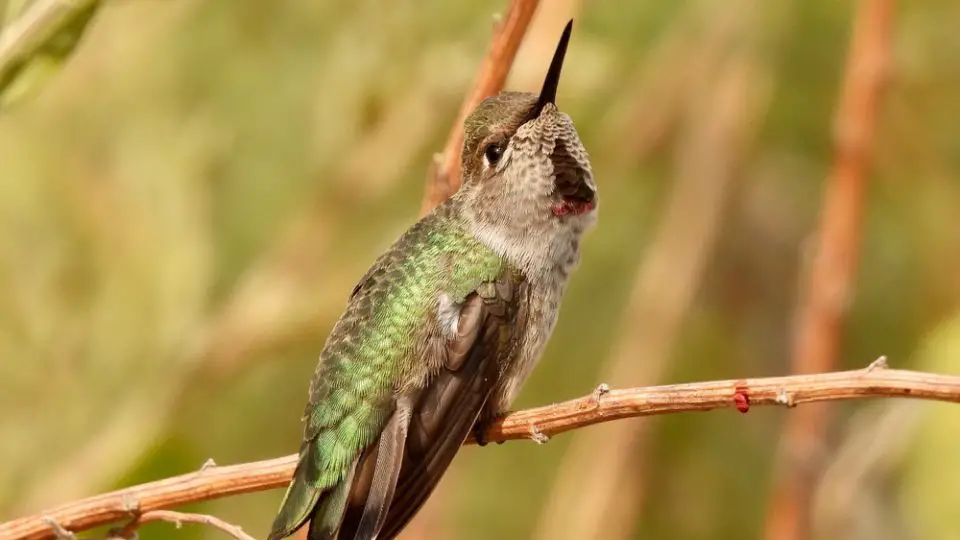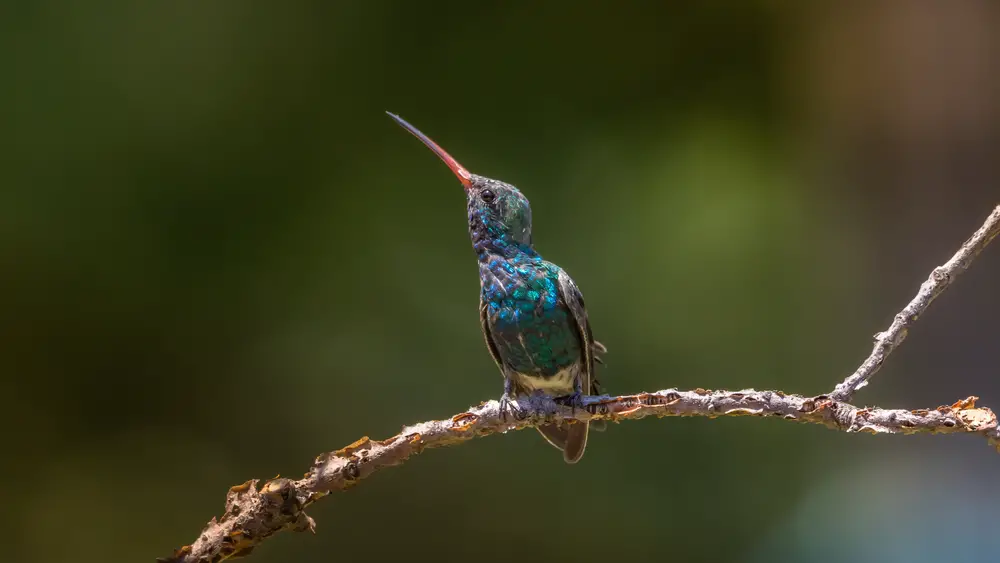Late February is the best time to put out hummingbird feeders so that migrants have easy food sources. Hummingbirds arrive in Tennessee in early spring. Late summer is the very best time to spot hummingbirds at feeders since they are preparing to migrate south.
Hummingbirds frequent Tennessee in both summer and winter. Put out hummingbird feeders in Tennessee by late February to provide food to migrants on their way north. Two species of hummingbird reside in Tennessee year-round, while at least seven other species visit the state seasonally.
Read on to learn more about hummingbird migration in Tennessee. Learn which species of hummingbird have been reported in Tennessee.
Table of Contents
What Is The Best Time Of Year To Put Out Hummingbird Feeders In Tennessee?
Put hummingbird feeders out by early March. Hummingbirds arrive in Tennessee between late March and mid-May. Some hummingbirds migrate to Tennessee for breeding grounds, while others pass through on their way further north. Two hummingbirds live in Tennessee year-round, while up to seven other species pass through during spring migration.
Put hummingbird feeders out a couple of weeks before hummingbirds usually arrive in your area. Western and southern Tennessee could see hummingbirds around late February. Hummingbirds complete spring migration from Mexico or Central America by early summer, flying north to breed. Some fly as many as 5,000 miles for migration between Central America and North America.
When Should I Take My Hummingbird Feeder Down In Tennessee?
Take hummingbird feeders down around late October, as long as you haven’t seen any hummingbirds recently. Tennessee hosts two hummingbird species year-round, so consider leaving feeders up all year. Tennessee birdwatchers can spot the Rufous Hummingbird and the Ruby-throated Hummingbird all year, so keep feeders out for these birds if possible.
Some hummingbirds overwinter along the Gulf of Mexico in Georgia, Texas, Mississippi, and Florida. Other species fly to Panama or as far south as Costa Rica and Guatemala. Hummingbirds know when to start fall migration because of small changes in weather patterns and their environments.

Hummingbird Migration
Some hummingbirds migrate from Central America, while others overwinter on the Gulf Coast before migrating north for breeding. Sometimes hummingbirds, like the Ruby-throated Hummingbird, fly 500 miles at one time over the Gulf of Mexico. Other species fly only a little at a time, taking months to migrate. Hummingbirds often return to the areas in which they were born.
Male hummingbirds begin migration a week or two before females. Once they arrive at their breeding grounds, they scout for food sources. The better the food choices, the more likely females will choose them as mates. Once they choose territories, they wait for females. Male hummingbirds are known for their territorial behavior, but sometimes females can be just as aggressive.
Female hummingbirds arrive a week or two after males and start building nests. Males perform courtship dives in hopes of impressing females to mate. After the courtship display, females either choose the male by looking straight at him or ignoring him—it’s up to her. Once a male mates, he leaves, and the rest of the work is up to the female.
How Do You Attract Hummingbirds In Tennessee?
Most species of hummingbirds eat hummingbird nectar. Make a sugar-water solution by boiling 4 cups of water and adding 1 cup of sugar. Let the solution cool and fill the feeders. Keep the extra solution in the fridge. Keep feeding hummingbirds for the duration of the season. These birds know exactly where their food sources are and will keep returning to those sources year after year.
Hummingbirds can be hard to spot during spring migration, as females are busy building nests and raising young. In late summer, hummingbirds are easier to spot. The juvenile birds are grown and feeding at hummingbird feeders. Both males and females feed often in late summer in preparation for the fall migration.
How Can I Make My Hummingbird Feeder More Attractive To Hummingbirds?
The best way to make hummingbird feeders attractive is to keep them clean and filled with fresh sugar water. Planting native plants like salvia, zinnias, columbine, and bee balm nearby will attract more hummingbirds. These tiny birds are drawn to brightly-colored flowers with tubular shapes. Hummingbirds can hover in front of flowers and stick their long bills inside to get the nectar.
Hummingbirds need fresh water during the heat and humidity of summer. Fill a shallow birdbath with water, ensuring it’s not too deep. Since hummingbirds are tiny, they can drown in deep water. Planting a shady shrub near hummingbird feeders will provide cool perches for hummingbirds to rest.
Common Tennessee Hummingbirds
Anna’s Hummingbird
Anna’s Hummingbird ranges from Alaska to southern California, this hummingbird can be found in Tennessee during winter. Rufous have bold orange feathers.
Ruby-throated Hummingbird
Ruby-throated Hummingbird is the most common hummingbird in the US, ranging from South Carolina to Missouri and Kansas. This bird arrives by mid-April in Kentucky, Virginia, and Tennessee, continuing migration all the way to Canada. Males have a red throat.

Migrant or Accidental Species in Tennessee
- Allen’s Hummingbird
- Typically found on the west coast
- Anna’s Hummingbird
- Most common on the Pacific Coast in Oregon and California
- Black-chinned Hummingbird
- Common in the western US states of New Mexico, Arizona, and California
- Broad-billed Hummingbird
- Ranges in the western US and has a red bill
- Broad-tailed Hummingbird
- Found in the western US and Canada
- Calliope Hummingbird
- Found in western Canada down to Mexico
- Mexican-violetear
- Ranges in Central and South America and is extremely rare in Tennessee

